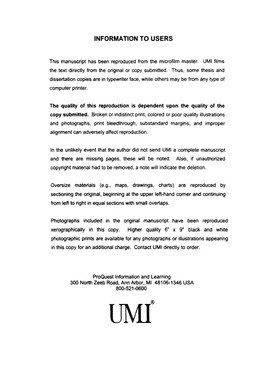| dc.contributor.advisor | Kaid, Lynda Lee, | en_US |
| dc.contributor.author | Banwart, Mary Christine. | en_US |
| dc.date.accessioned | 2013-08-16T12:18:34Z | |
| dc.date.available | 2013-08-16T12:18:34Z | |
| dc.date.issued | 2002 | en_US |
| dc.identifier.uri | https://hdl.handle.net/11244/464 | |
| dc.description.abstract | Based on the results of the study, differences did emerge in the videostyles and webstyles of female and male candidates in 2000. For example, female candidate videostyle differed from male candidate videostyle in a more "politically sophisticated" manner that blended the strategic strengths of a variety of candidacies. Male candidates differed from female candidates in a more "personal leader" videostyle that encouraged voter identification and yet emphasized legitimate leadership. While few differences were detected between female candidate webstyle and male candidate webstyle, female candidate webstyle differed from that of male candidates in a more "feminine personal-professional" style and male candidate webstyle differed from that of female candidates in a more "masculine up-front" style. | en_US |
| dc.description.abstract | The results from the comparison of female candidate videostyle and webstyle and male candidate videostyle and webstyle indicated that significant differences did emerge in the self-presentation strategies used by both female and male candidates on each medium. However, although differences emerged, the characteristics that differentiated a candidate's videostyle from webstyle can be more fully explained by the medium constraints than by the influence of gender. This study therefore posits that such differences suggest female candidates may have finally found ground that provides an equal level on which to present the image of a political leader. | en_US |
| dc.description.abstract | This content analysis examines the self-presentation strategies of female and male political candidates in mixed-gender gubernatorial, U.S. Senate, and U.S. House races during the general cycle of campaign 2000. By selecting the televised spot ads from these three levels of office, this study first expands the prior research on female and male candidate videostyle to offer a complete analysis of female and male videostyles in major level races. Second, based on the foundation of videostyle, this study proposes a systematic method---webstyle---by which to analyze candidate self-presentation on the Internet. Third, this study explores how gender influences candidate image development across a traditional medium and a relatively new, complex multi-media environment. | en_US |
| dc.format.extent | xi, 363 leaves ; | en_US |
| dc.subject | Speech Communication. | en_US |
| dc.subject | Women Political activity United States. | en_US |
| dc.subject | Internet in political campaigns United States. | en_US |
| dc.subject | Communication in politics United States Sex differences. | en_US |
| dc.subject | Television in politics United States. | en_US |
| dc.subject | Advertising, Political United States. | en_US |
| dc.title | Videostyle and webstyle in 2000: Comparing the gender differences of candidate presentations in political advertising and on the Internet. | en_US |
| dc.type | Thesis | en_US |
| dc.thesis.degree | Ph.D. | en_US |
| dc.thesis.degreeDiscipline | Department of Communication | en_US |
| dc.note | Adviser: Lynda Lee Kaid. | en_US |
| dc.note | Source: Dissertation Abstracts International, Volume: 63-03, Section: A, page: 0816. | en_US |
| ou.identifier | (UMI)AAI3045842 | en_US |
| ou.group | College of Arts and Sciences::Department of Communication | |
